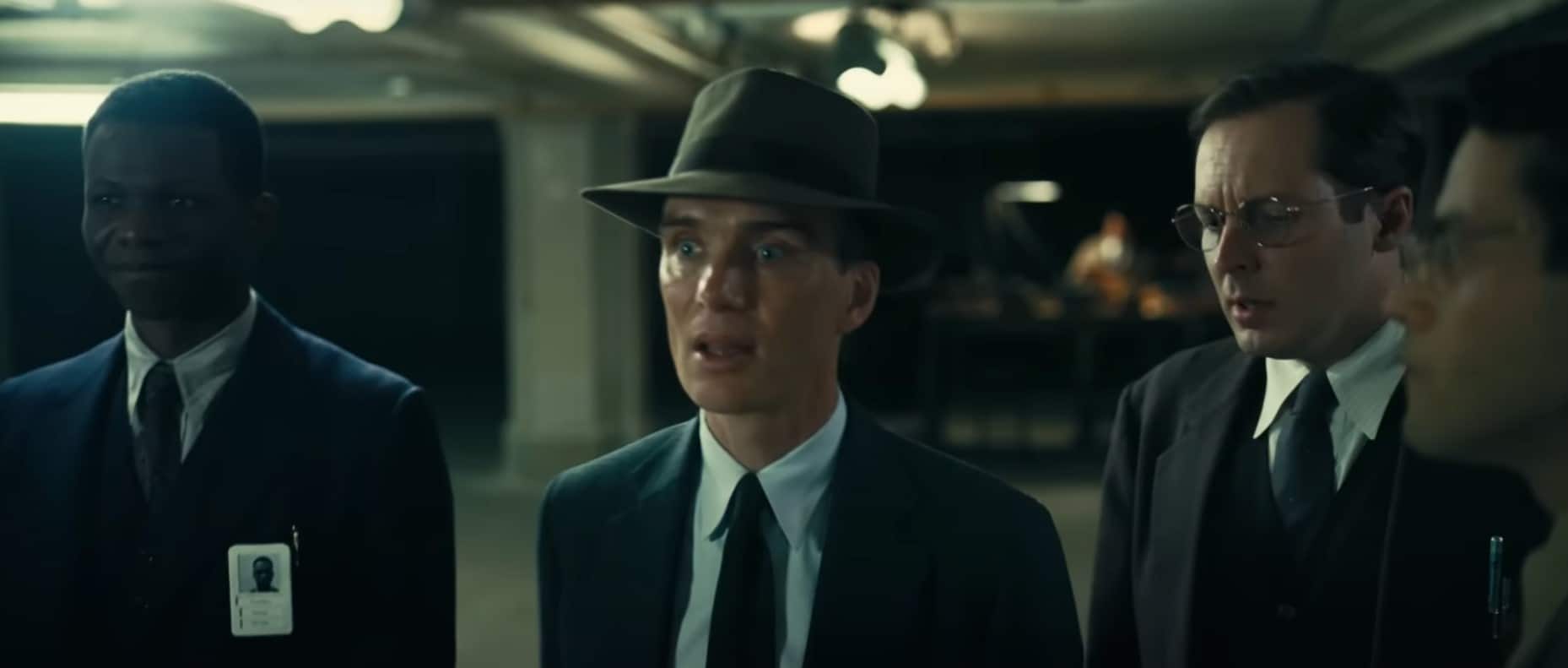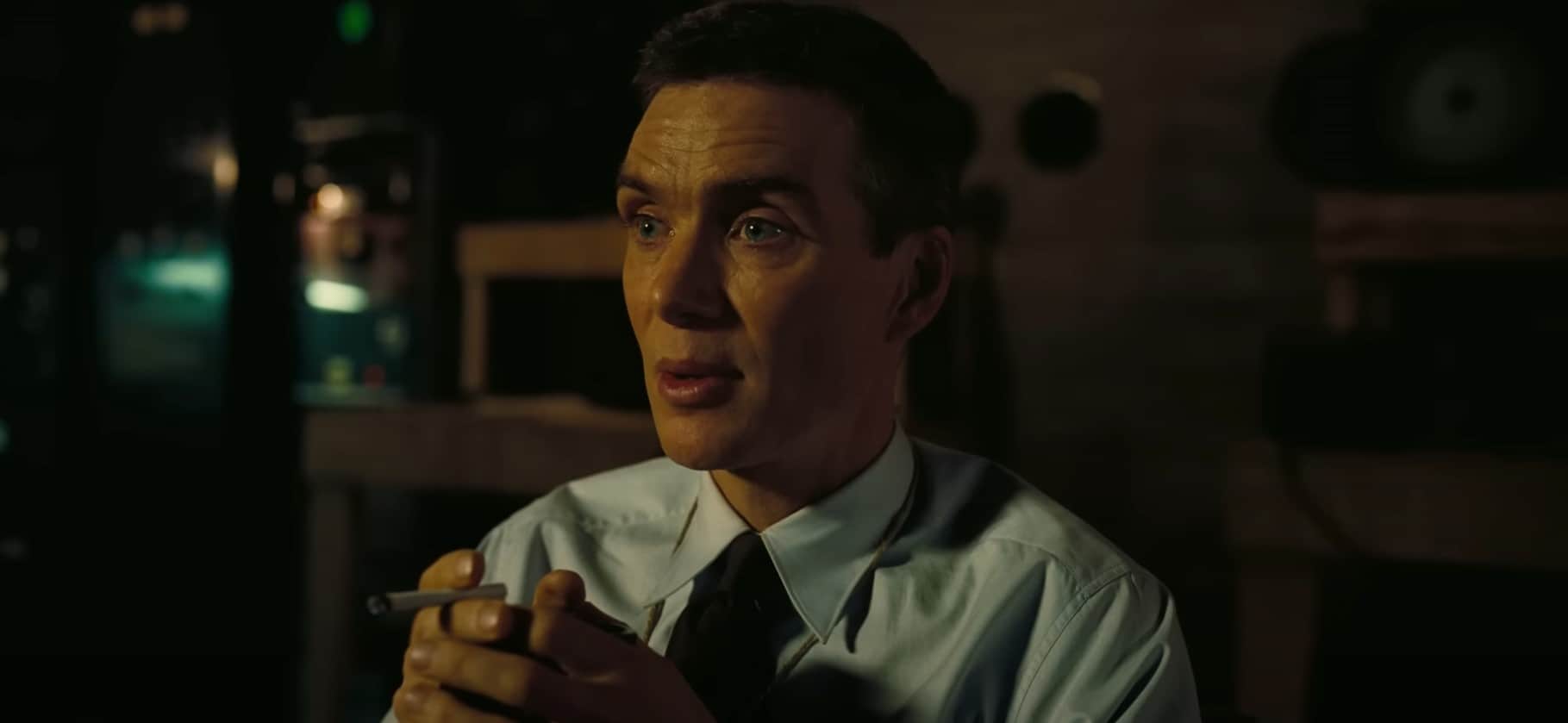Oppenheimer is the latest movie by Christopher Nolan starring Cillian Murphy, Emily Blunt, and Josh Hartnett. Directed and written by Nolan and based upon the book “American Prometheus,” the movie, clocking at over three hours, is a masterpiece of a biopic that proves that with Nolan, there’s still hope for movies in that liberal hellhole called Hollywood.
Oppenheimer is a biopic about the man who led the American war effort to construct a nuclear device to use as a weapon. If you’ve seen his work, you know that he’s a provocative director. He uses stunning cinematography and employed Ludwig Göransson’s music to accompany it, and it delivers the powerful message that there are consequences to the collective effort of an elite. So let’s explore Oppenheimer’s ending.

Christopher Nolan Plays With Time In His Movies
With movies to his credit like The Dark Knight Trilogy, Inception, Memento, and Interstellar, Nolan has always touched the topic of time as one of his working themes:
We’ve seen how a man employs time to fight crime in Batman; How you can use its elasticity to fight against terrorism in Tenet; How to use it to save mankind in Interstellar; How time is crucial for men and their individual stories in a collective effort in Dunkirk; how time affects our minds in Memento or how the oniric interpretation of time creates or distorts realities in Inception. But in Oppenheimer, Nolan takes it with time a step forward.
What Is Oppenheimer’s Theme?
Oppenheimer is essentially three stories melded into one: One is a Senate confirmation for Admiral Lewis Strauss, a Jewish potential appointee for a position in Dwight D. Eisenhower’s cabinet, the other is the collective effort of a group of Jewish scientists to build an atomic device for the American war effort to put an end to the war events that took place in Central Europe and the Pacific in the 1940s, and the other is the story of Jewish physicist that is not painted as an immaculate hero nor a martyr, he’s a complex man of an elusive genius with neurotic-like behavior, narcissistic traits, megalomaniacal and morally stunted at best.
In Oppenheimer, Nolan explores time as a tool. America was attacked by an enemy, time was crucial to develop a powerful new device that could be weaponized, and the only one that could put an effort together was this mess of a man who learned quantum physics in Europe and brought them to the Western United States, and pretty much nobody wasn’t paying attention. After all, it’d been more than twenty years.
Also Read: Oppenheimer Controversy: The Movie Went Too Aggressive With the Theme
Jewish Commies Building A Nuke
That’s why Matt Damon’s character, Leslie Groves, a general and engineer that built the Pentagon and is frustrated with not being deployed in the war theaters, gets tasked with getting together a group of scientists is so interesting. American intelligence, the Hoover FBI, and the precursors to the CIA knew that all the scientists capable of developing a nuclear bomb had a common political, and ethnoreligious common denominator: They were Jewish radical communists and strongly anti-American when the Americans went against their group interests.
And Oppenheimer wasn’t the exception; that’s why a third of the movie is a sort of a moral trial of his character as a communist. He couldn’t be accused of an antisemitic witch hunt because, on the other third of the movie, his main antagonist, Admiral Lewis Strauss, and co-conspirator, the physicist Edward Teller were also Jewish.
So, they build a bomb, and here’s the deal, you can’t make a movie about this man without mentioning Judaism: Leo Szilard, Edward Teller, Kitty Oppenheimer, Frank Oppenheimer, Lilli Hornig, Richard Feynman, Isidore Isaac Rabi, and Robert Serber were all Jewish, had a strong identification as Jewish and couldn’t separate that from their communist sympathies, that’s why after the construction of the device, (the other third of the movie) its explosion in Los Alamos, the moral compass of Oppenheimer and his scientific Jewish clique begins to shift.

Guilty Conscience
After Hiroshima, Oppenheimer is high on the acclaim and praise of his colleagues. He delivers a speech celebrating that they “couldn’t drop the bomb in Europe,” and it is interesting how Nolan depicts the Jewish communists’ animus against Fascist Germany as a major motive for their working in the Manhattan Project. So when the Germans raise the white flag, an important number of scientists suddenly develop moral reservations as to when to use another nuke.
Across the film, we see Cillian Murphy’s character go back and fro to the rationalization for bombing Japan twice with two nukes; Oppenheimer didn’t sign petitions or join the radical leftists in their causes but fraternizes with them dearly.
Oppenheimer Ending Explained
Towards the end, Oppenheimer, out of the blue, grows a conscience. He opposes the development of more nuclear bombs, doesn’t want a Hydrogen bomb, and starts promoting globalism. He poses as a humanitarian, as a New Deal democrat, he poses as anything to save his credential to continue working as a nuclear physicist, but the government doesn’t buy it.
So he’s an outcast, and Nolan intelligently teases the complex morality of the situation, but he handles it with great dynamics, perhaps too much because it’s a three-hour movie.
Oppenheimer’s ending is flat and humid, it’s not the kind of emotionally shattering conclusion that you got from Interstellar or Dunkirk, but the main character was a flawed man that had the chance to make history in the correct time and place: Building a nuke for the American war effort to have a competitive edge against the enemy and changing history while doing it so.
That’s it; there’s no more. That’s the gist of it, Nolan doesn’t play with your mind, nor he wants you to think there’s something else. If you think the science behind the atom is difficult, try dramatizing it on IMAX in tiny snippets. Oppenheimer concludes with the fact that the world is no longer the same, and that kind of power is as useful as it is destructive.
Also Read: How Did Oppenheimer Die? Cause of Death Explained




